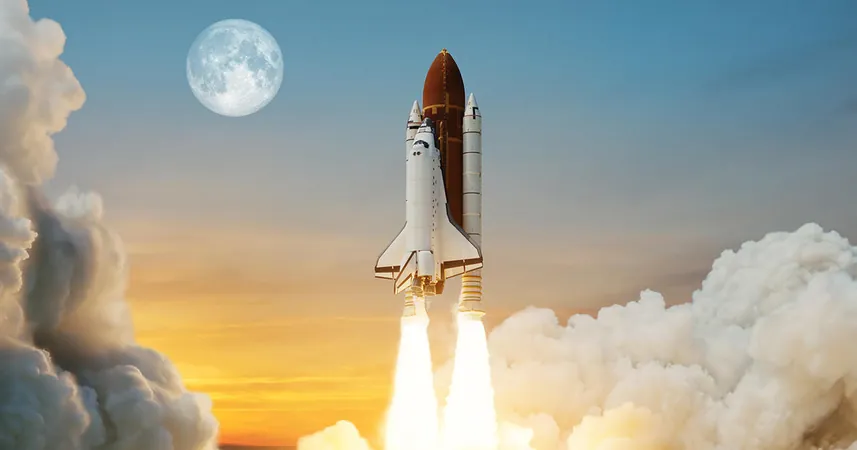
Revolutionizing Aerospace: Unraveling the Mysteries of Space Flight and the Human Brain
2024-11-04
Author: Siti
Revolutionizing Aerospace: Unraveling the Mysteries of Space Flight and the Human Brain
The aerospace industry has undergone extraordinary changes since the 1960s, a pivotal decade that introduced us to groundbreaking missions such as Vostok, Soyuz, Gemini, and Apollo. These achievements ignited global enthusiasm for humanity’s potential in space exploration. In recent years, companies like SpaceX have revolutionized the aerospace landscape, marking the advent of a new era characterized by private commercial space flights. With NASA’s Artemis program, we’re gearing up to return to the Moon and beyond, with crewed missions targeting Mars.
The Intersection of Aerospace and Neuroscience
While the aerospace sector has focused extensively on rocket development for space exploration, it is now crucial to enhance our understanding of how the space environment impacts human physiology. This renewed focus comes at a time when industry activity is surging, creating an opportunity to dive deeper into the complex effects of microgravity and radiation on the human brain.
Research has revealed various impacts of microgravity, including a critical condition known as Spaceflight Associated Neuro-Ocular Syndrome (SANS). This syndrome encompasses an array of neurological and ocular issues stemming from brain swelling and changes in fluid dynamics when astronauts are in space. It is a stark reminder of the brain’s vulnerability; even as the pinnacle of evolution, it has adapted to conditions found only within Earth’s gravitational field and protective magnetosphere.
Research demonstrates that the brain swells during spaceflight due to altered intracranial pressures, leading to persistent visual and neurological impairments once astronauts return to Earth. The journey ahead necessitates a detailed understanding of these challenges to enable longer-duration missions.
Groundbreaking Research Initiatives
Building on previous studies from the Axiom-2 mission, a recent exploration aboard the SpaceX Polaris Dawn mission aimed to deepen our understanding of SANS. Launched on September 10, 2024, this mission incorporated innovative methods for monitoring brain pressure through a portable device utilizing pupillometry – tracking pupil responses to infrared light. This device, initially designed for critically ill neurosurgical patients, is now being evaluated in the unique environment of space. By cross-referencing pupillometry data with pre- and post-flight MRI scans, researchers hope to uncover invaluable insights into the neurological risks associated with space travel.
The Polaris Dawn project represents a critical fusion of aerospace technology and neuroscientific research, essential for future risk management and clinical protocols as commercial space flight advances. This collaboration underscores the importance of prioritizing astronaut health alongside technological development, ensuring that as we venture further into the cosmos, we safeguard the well-being of those brave enough to explore it.
In conclusion, as the space race evolves into a new frontier of commercial endeavors and interplanetary goals, understanding the profound effects of the space environment on the human brain will be vital. The data compiled from the Polaris Dawn mission promises to shed light on these crucial intersections and will be shared with the world soon, marking another step towards unraveling the mysteries of space and humanity’s journey among the stars.


 Brasil (PT)
Brasil (PT)
 Canada (EN)
Canada (EN)
 Chile (ES)
Chile (ES)
 España (ES)
España (ES)
 France (FR)
France (FR)
 Hong Kong (EN)
Hong Kong (EN)
 Italia (IT)
Italia (IT)
 日本 (JA)
日本 (JA)
 Magyarország (HU)
Magyarország (HU)
 Norge (NO)
Norge (NO)
 Polska (PL)
Polska (PL)
 Schweiz (DE)
Schweiz (DE)
 Singapore (EN)
Singapore (EN)
 Sverige (SV)
Sverige (SV)
 Suomi (FI)
Suomi (FI)
 Türkiye (TR)
Türkiye (TR)